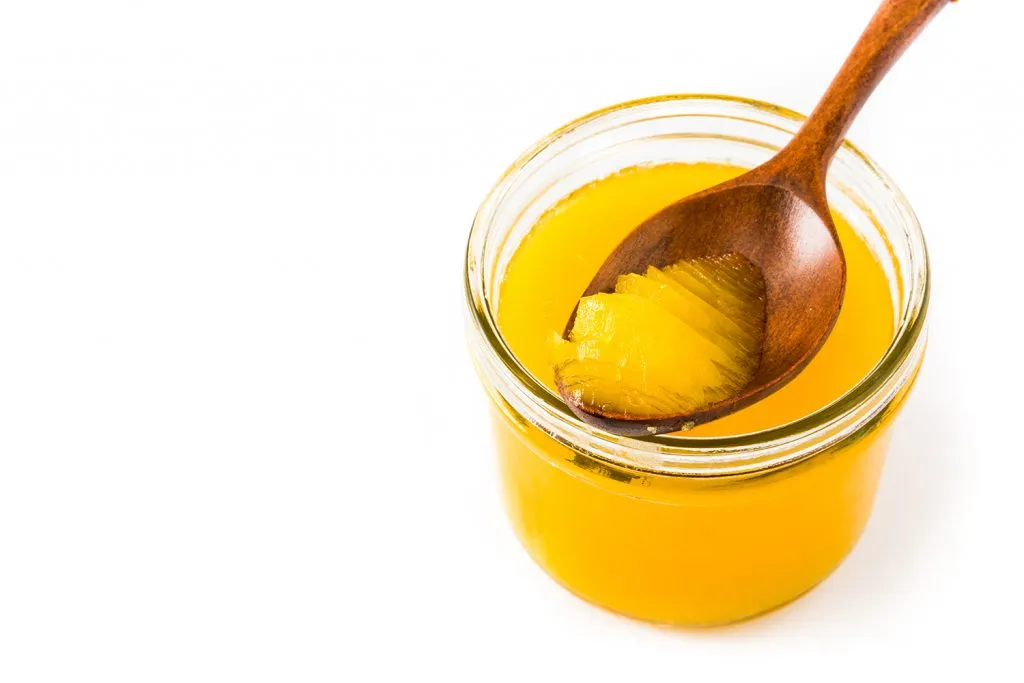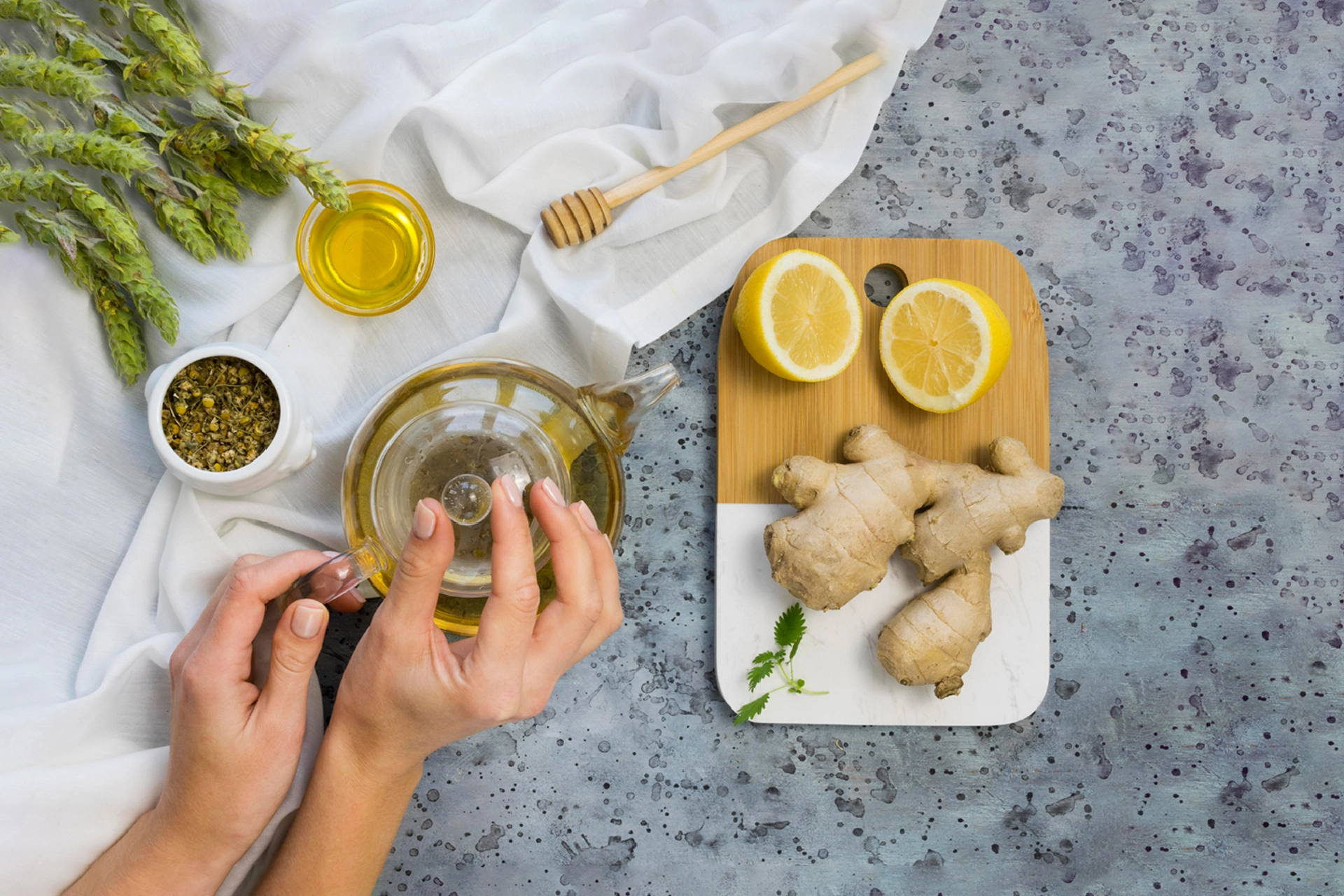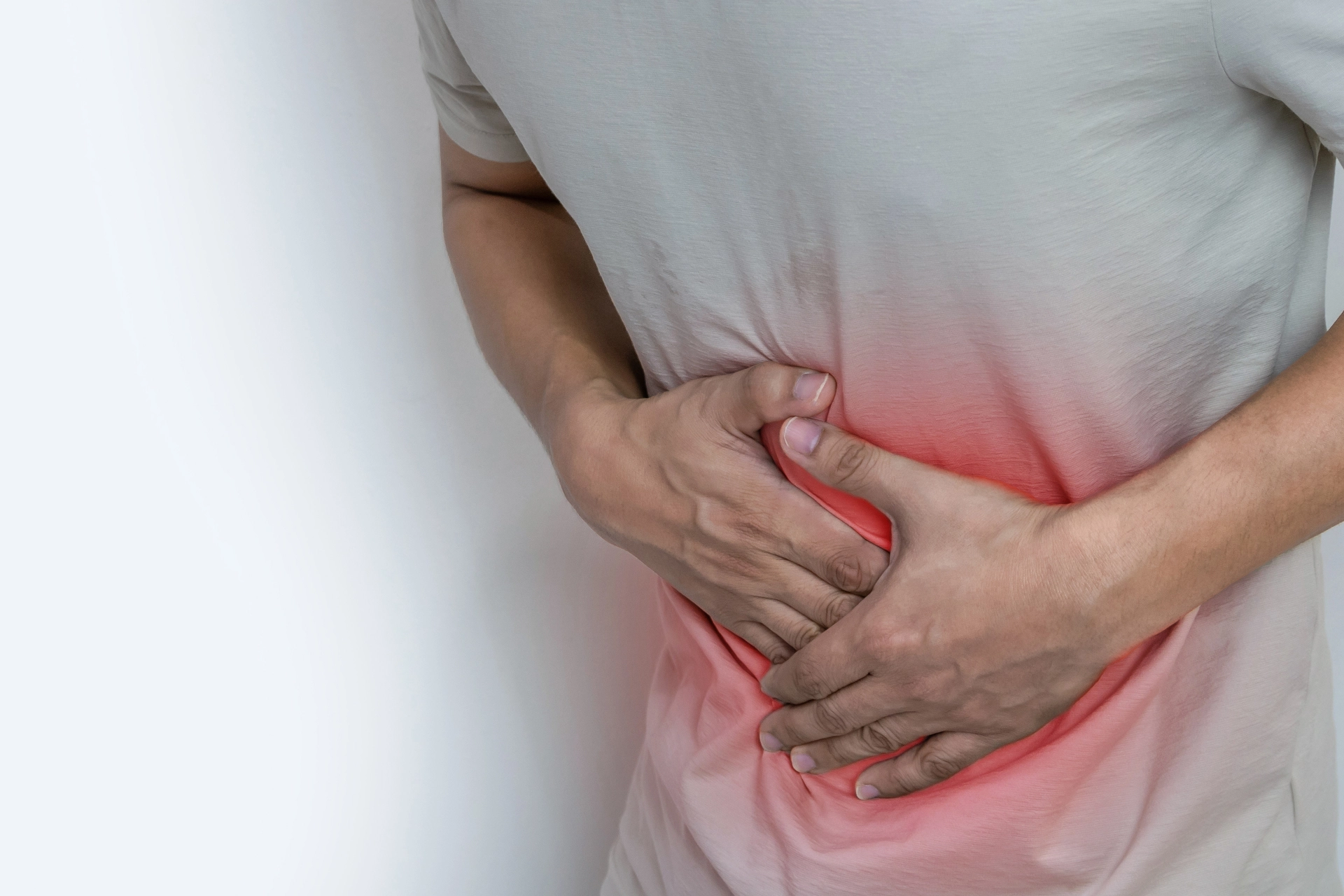Ayurveda | 8 min read
Ghee: Benefits, Nutrition Facts, How to Make Ghee and Myths
Medically reviewed by
Table of Content
Key Takeaways
- Having desi ghee benefits your heart and vision
- Cow ghee benefits you by boosting immunity
- Adding ghee to rotis makes them moist and digestible
Who doesn’t enjoy a dollop of ghee on hot khichdi, on halwa or smeared on your rotis? According to Ayurveda, ghee is one of the most valuable foods to have on a daily basis with wonderful healing properties. Cow ghee is nothing but clarified butter prepared from milk and is packed with the goodness of vitamin A, D, E, C, K and omega-3 fatty acids [1]. When you have 1 teaspoon of ghee, calories that you’re consuming amount to 42. Take a look at what else this quantity of ghee benefits you.
What Is Ghee?
Knowing what exactly ghee refers to is the first step in enjoying the various health benefits of ghee. Ghee is clarified butter in which the milk solids are separated. Ghee does not contain milk solids and water, so ghee has a higher fat concentration than butter. Milk solids in ghee are simmered and turned brown, which gives a nutty flavor to the final product. This process helps ghee develop a darker color too.
Nutritional Value of Ghee
There are umpteen ghee health benefits you must know. Ghee is packed with essential nutrients like vitamins K, E, and A. It also contains butyric acid, which reduces inflammation and promotes good digestion. Ghee is packed with fats and is a calorie-dense food providing approximately 883 calories of energy.
- 5g of fat
- 0g of carbs
- 0g sugar
- 0g fiber
- 0g protein
Ghee Benefits For Health
1. Improve Your Immunity with Desi Ghee
One of the most important ghee benefits is that consuming it can boost your immunity levels. Butyric acid present in ghee helps in the production of T cells, an important component of the immune system that kills infected host cells and helps fight infections [2].
One cannot talk about ghee’s nutritional value without stressing on the fact that it is packed with antioxidants. These antioxidants enable your body to absorb all essential nutrients and minimize your chances of falling sick.
Another interesting fact about ghee nutrition is that ghee contains antimicrobial and antiviral properties that can provide you with energy required for your body. No wonder nursing mothers are given ladoos made with desi ghee!
2. Ghee Benefits For Skin
Have you ever thought about ghee benefits for skin? As it is rich in essential fatty acids, ghee helps in hydrating your skin and retaining its moisture. Not only does it purify your skin, but it can also add a glow to dull skin. Add a dollop of ghee in your diet and say goodbye to dry skin! You can even create your own face mask using gram flour and ghee. See your neck and facial skin become supple and moisturized with regular use.
Additional read: Dry Skin Causes
3. Ghee Good For the Heart
Amongst several cow ghee benefits, one of the most important ones is that ghee prevents the deposition of calcium in your arteries. This ensures smooth blood circulation to and from the heart. Ghee also minimizes LDL levels and increases HDL or good cholesterol levels as the fats present in ghee are used up as energy sources and not stored in the body.
4. Treat Cough and Ghee Benefits For Eyes
Ghee is effective in curing cough as it helps in reducing chest congestion, which is common during colds. Apply it on your chest to get relief or have onions fried in ghee to minimize your sore throat problems. As it is rich in omega-3 fatty acids, ghee also helps in improving your vision and reducing eyesight issues.
5. Ghee Benefits For Weight Loss
The conjugated linoleic acid present in ghee aids in weight loss. The presence of other healthy fatty acids and fat-soluble vitamins in it also help you tackle obesity. Ghee helps in cleansing your system by flushing out harmful toxins from the body, thereby accelerating your metabolism. This is one of the most beneficial ghee uses as it helps in reducing your weight, a fact which has been misunderstood for a very long time!
Additional read: Amazing Weight Loss Drinks6. Decrease Glycemic Index of Rotis by Smearing Ghee
While rotis smeared with ghee is something that is loved by all, you cannot neglect its nutritional benefit. Putting ghee on chapatis actually minimizes their glycemic index. Adding ghee to your rotis makes them moist and easily digestible as well.
7. Treat Swelling And Burns By Applying Ghee
One of the key benefits of ghee is its ability to provide relief from burns. Whether it is a swelling on the skin or a burn mark, the immediate application of ghee on the affected part does wonders. The butyrate present in ghee helps heal the inflammation and reduces your swelling. Ayurveda advocates using ghee to treat swelling and burns too.
8. Soothe Clogged Nose Problems With Ghee Application
A stuffy or clogged nose is a classic symptom of the common cold. Not only do you face breathing problems, but your taste buds also go for a toss when you have a cold. According to Ayurveda, following Nyasa treatment may give you quick relief. The treatment involves the application of warm ghee into your nostrils. Pour a few drops of ghee into your nose as soon as you wake up in the morning to get relief from a clogged nose.

9. Ghee Benefits For Bones
This is one of the vital ghee health benefits you must know. Ghee is packed with vitamins like A, D, and K that improve its nutritional value. Vitamin K aids in easy calcium absorption, helping strengthen your bone density. Including ghee in your meals can also prevent tooth decay.
10. Balance Your Hormones By Taking Ghee
Menstrual irregularities occur when there is a fluctuation in your levels of estrogen and progesterone. Whether you have menstrual cramps or irregular periods, adding a spoonful of ghee to your meals can work wonders. You can also massage it on your abdomen for instant relief from cramps and pain. This is one of the most important uses of ghee for women.
11. Ghee Benefits For Constipation
When you have constipation, taking ghee can give you relief. A combination of warm milk and ghee is a mild remedy to help regularize bowel movements. All you need to do is add 1-2 teaspoons of ghee to a glass of hot milk. Drink it before your bedtime, and you can get quick relief from constipation. With so many ghee health benefits, make sure to include ghee in your meals daily.
How Is Ghee Made?
While you may be aware of the many uses of ghee, learn how to make ghee too. Follow these simple steps to make ghee.
- Heat butter to separate milk solids and liquid from fat
- Boil the butter vigorously until the liquid gets evaporated and solids settle in the bottom
- Continue boiling until the milk solids turn into a golden color
- Cool the remaining contents
- Transfer the warm ghee to a jar after straining it thoroughly
Myths About Cow Ghee
There are many common myths about cow ghee, and you too may believe in some of them. Take a look at the myths below.
- It is difficult to digest ghee.
- It is loaded with fats that may result in obesity.
- It is unsuitable for people with heart ailments.
- It is dangerous to consume dishes cooked in ghee.
- It can have toxic effects on your health.
How To Make Ghee At Home?
While you know about ghee uses and various benefits of ghee, learn the simple procedure to make ghee at home. Making ghee at home is highly beneficial and comparatively cheaper than buying a jar of ghee at the market. While it is easy to make, there are high chances of burning it if you do not monitor it properly.
The best way to prepare ghee is from homemade butter. Homemade butter is prepared from the cream of milk or malai. The advantage of using cream to prepare ghee is that you get three end products: ghee, butter, and buttermilk.
Make sure your cream is rich and of good quality, and follow this in-depth recipe for preparing ghee at home.
- Be sure to use cold cream when you make ghee
- Churn the cream thoroughly in a large bowl for a few minutes
- Continue churning until you see the butter and liquid separate
- Make sure that the cream has separated completely
- Cover a sieve with a thin cotton cloth and place it on the bowl
- Drain the butter on the cloth and the liquid buttermilk in the container
- Squeeze the cloth to ensure that the liquid is removed completely
- Place the freshly prepared butter in a pan and keep it on the stove
- Melt the butter completely
- Simmer the butter and cook it for at least 20-25 minutes
- Stir intermittently to ensure that ghee does not burn
- Cook ghee until the color of ghee changes from a bright yellow color to a light golden-brown color
- Stop cooking when you get clear ghee and brownish milk solids at the bottom
- Cool the ghee and transfer it into an airtight jar after straining the milk solids
Now that you are aware of the umpteen benefits of ghee, do not hesitate to include it in your diet. It is one of the healthiest foods to have, but make sure that you are eating pure ghee. This is what offers all the goodness that boosts your health. However, if you face any health issues or have diet constraints, talk to doctors and specialists on Bajaj Finserv Health. Book a tele-consult or in-person appointment and address all your health concerns with ease.
References
- https://health.clevelandclinic.org/better-than-butter-separating-ghee-fact-from-fiction/
- https://www.artofliving.org/in-en/ghee-ayurvedic-holy-medicine
Disclaimer
Please note that this article is solely meant for informational purposes and Bajaj Finserv Health Limited (“BFHL”) does not shoulder any responsibility of the views/advice/information expressed/given by the writer/reviewer/originator. This article should not be considered as a substitute for any medical advice, diagnosis or treatment. Always consult with your trusted physician/qualified healthcare professional to evaluate your medical condition. The above article has been reviewed by a qualified doctor and BFHL is not responsible for any damages for any information or services provided by any third party.





